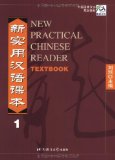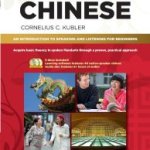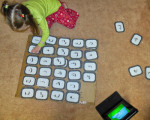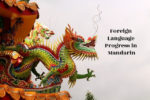Learning different languages is an important part of our approach to homeschooling. In North America it is typically considered unusual to spend much time learning more than one foreign language, but in other parts of the globe multiple languages are normal and expected. Mandarin is a language we have been slowly learning for several years now.
Last school year I made the switch to the New Practical Chinese Reader. I like that it covers conversation, writing, reading, listening, grammar, and phonics. We were using Better Chinese’s My First Chinese Reader and my kids made quite a bit of progress with reading Chinese and memorizing characters, but the program was mostly designed to be used in a classroom setting with a native speaker. Even though I had the English teacher’s manual there were times where I had to puzzle out what something meant. It was also a costly option in the long-run. We also had to supplement with tone-drills because it didn’t help train your ears to hear the sounds of Mandarin. The New Practical Chinese Reader is designed to be a college textbook for beginners. I am fond of using college textbooks for foreign language because they usually have great audio support and more explanations in English. I found this to be true with the New Practical Chinese Reader too. I had no problem using this with my 3rd grader last year. I am using Better Chinese’s My First Chinese Words with my youngest and I really like that program for her.
When we work on Mandarin, I work one-on-one with each child, typically. The textbook provides organization for me to help structure my child’s learning. I may not know Mandarin, but I listen to make sure my child’s tones match the correct tones and that they are writing the characters in the correct stroke order. I engage in conversations with them based on the text. I use the model conversations to practice conversation and we play different parts. Here is a chapter that my son is currently learning. The lesson conversations are also on Youtube.
We work to mastery so if my child has trouble on a concept or trouble remember the stroke order for the characters in the chapter we stay put until it is mastered.
I have a little bit of a background in accent reduction. In graduate school for Speech-Language Pathology my area of focus was on accent reduction and I enjoyed working with students from China and Russia to help them learn to hear and pronounce the sounds of English. Because of that background, I have placed great emphasis on developing my children’s ability to hear the sounds of Mandarin. It is difficult to say something correctly when you can’t hear the difference. My kids watch Mandarin cartoons nearly every school day. We have also placed great emphasis on hearing the differences between the tones and have done tone drill after tone drill. I started Mandarin at a young age with exposure starting in the preschool years or younger. My youngest child has been around some Mandarin her entire life. When she was small she would enjoy pretending to talk in Mandarin, imitating the rhythm of the language.
The New Practical Chinese Reader has been a good fit for us. We are progressing slowly and I expect this journey will be a long one with much work along the way. I don’t know how proficient my children will be when they are grown, but they will at least have a good head start toward fluency. But most of all, they will have a way to connect with over a billion Mandarin speakers in the world. We also seek to have our children see the world through borderless eyes and learning a language is a great way to understand a culture different from your own.
We recently expanded our studies to include a tutor. We found an international student at a local university who only came from China 5 months ago. We are meeting with her about once a month to get her help with conversation and pronunciation as well as another other issues that arise. Although we have been studying for years, this is our first connection with a native speaker. I was pleased to find out that their tone production is pretty good.








Love your post. I’m a homeschooling mom myself and I’m teaching my young kids both English and Chinese as well. (I’m a native Cantonese speaker.) So do you speak Chinese too? How did you do to support your children learning Chinese? Were there any huge struggling or problems? I really admire parents who don’t speak Chinese but try their best to support their children. That’s amazing.
Wow! I was very surprised to see you’re using this textbook to teach Chinese in home school. We live in China and attend a language school, and this is the book my husband and I used in class. I was looking for something for my oldest son, as he will be learning at home from a tutor since he is too big to attend Chinese preschool now. I never thought this could be used for kids because it’s designed as a college student textbook. I had trouble with it because our teacher moved too fast. She tried to get us through 1 lesson per week. There are just way too many new words and characters for me to master in only a week’s time, especially since I am also a busy home school mom to soon-to-be 6 kids. Maybe I will use it for my son though. His tutor is already familiar with it since he taught at our school using this book.
We also homeschool and are planning to use the NPCR to begin learning mandarin. I bought the instructors guide and realize that it is for native speakers. It is written entirely in Mandarin with no translation. Did you just use the textbook, workbook and cd’s with your kids and was that enough instruction. Thank you!
Sherri,
Thanks for the comment. I am just using the textbook and workbook with their included cds. There are Youtube videos to go along with each lesson too. I’m also using the Chinese Writer app to give them more practice writing the characters from each lesson. It is slow going, but we are making progress. There is a lot of English in the books so everything is explained quite well.
Very interesting!